Wombats are a group of strong and stout marsupials from Australia that belong to the Vombatidae family. In many respects they are convergent with ground squirrels and other burrowing rodents found elsewhere in the world, living in extensive burrows that they excavate themselves and feeding on grasses, plant roots, and other low growing vegetation. Even their teeth are convergently rodent-like, with a set of ever-growing incisors.
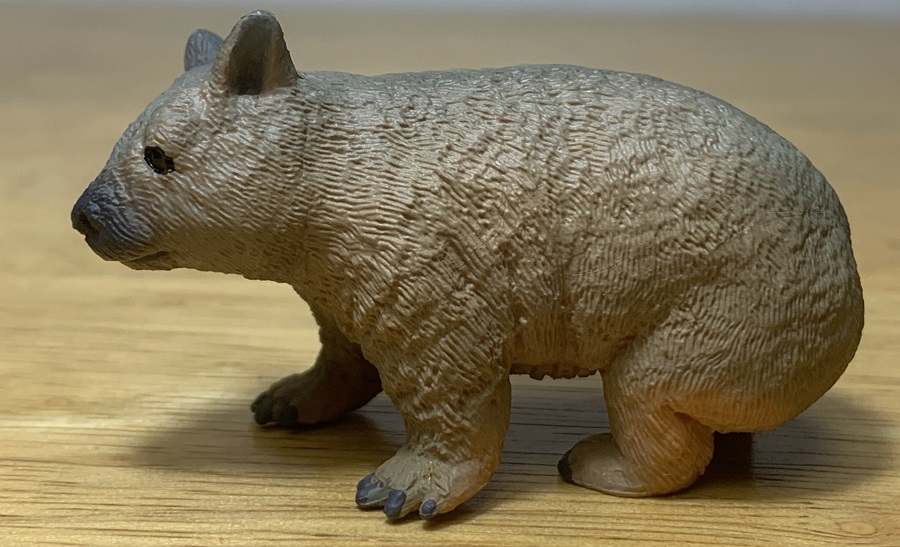
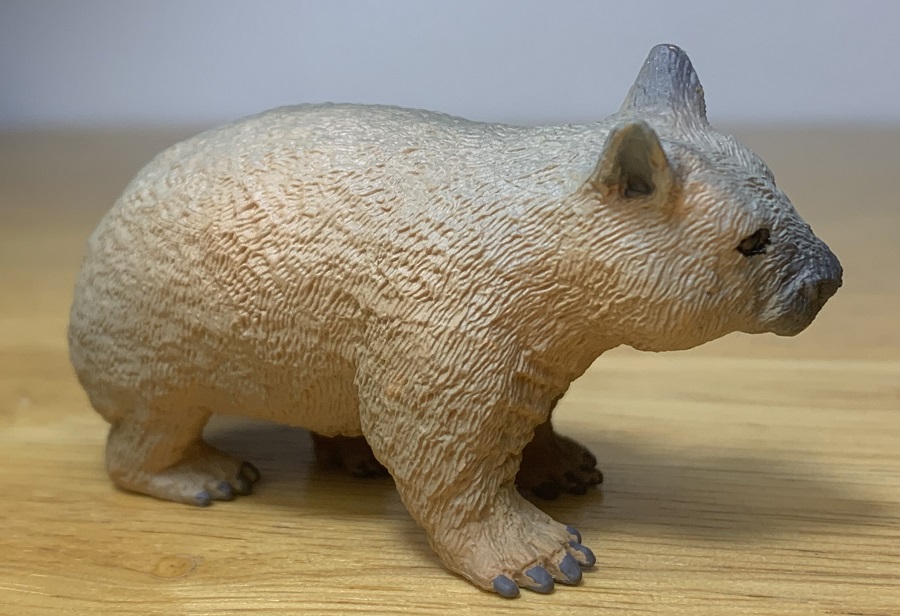
Today we’re looking at the 2016 wombat from Safari Ltd. This is a figure that I initially disregarded due to unflattering promotional photos but ultimately decided to get during Safari’s recent blowout sale. I’m happy that I did because as is often the case with Safari, promotional photos don’t do the toy justice. Let’s take a closer look.

The Safari wombat specifically represents the southern hairy-nosed wombat (Lasiorhinus latifrons) but there are two other species of wombat as well. The critically endangered northern hairy-nosed wombat (L. krefftii) that is only found in Queensland, and the common or bare-nosed wombat (Vombatus ursinus). The southern hairy-nosed wombat can be found in scattered populations in southern portions of the territories of western and south Australia.
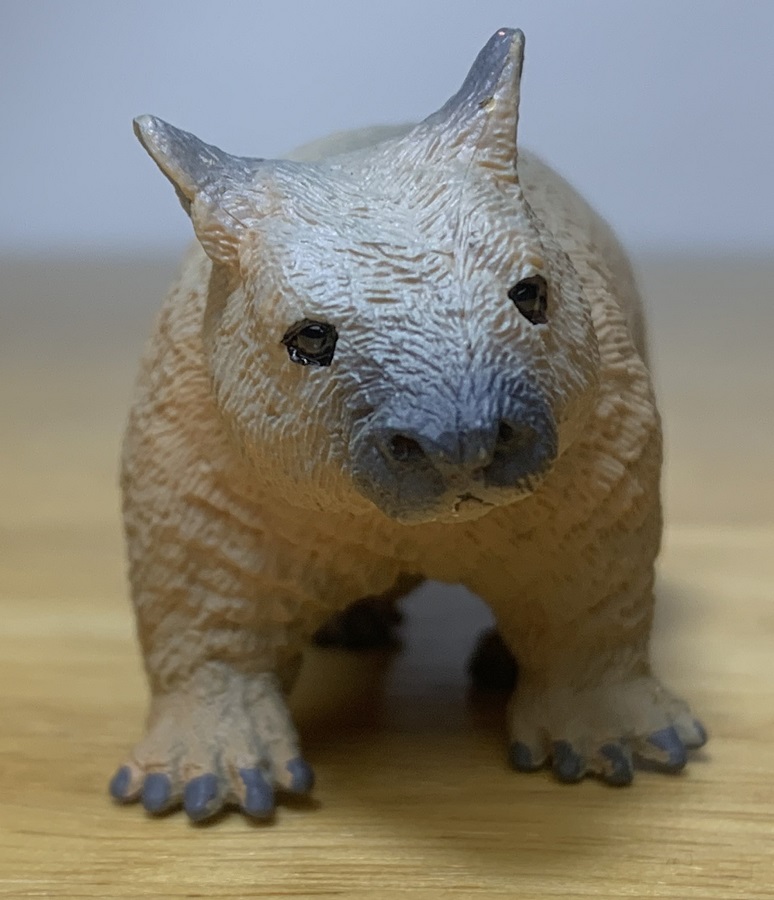
Safari’s wombat has a snout-to-rump length of 3” (7.62 cm) and stands 1.5” (3.81 cm) tall at the shoulder. The actual southern hairy-nosed wombat measures up to 36.8” (93 cm) in length, putting the toy at about 1/12 in scale. Wombats are dense animals, and the southern hairy-nosed wombat can weigh up to 71 lbs. (32 kg)!
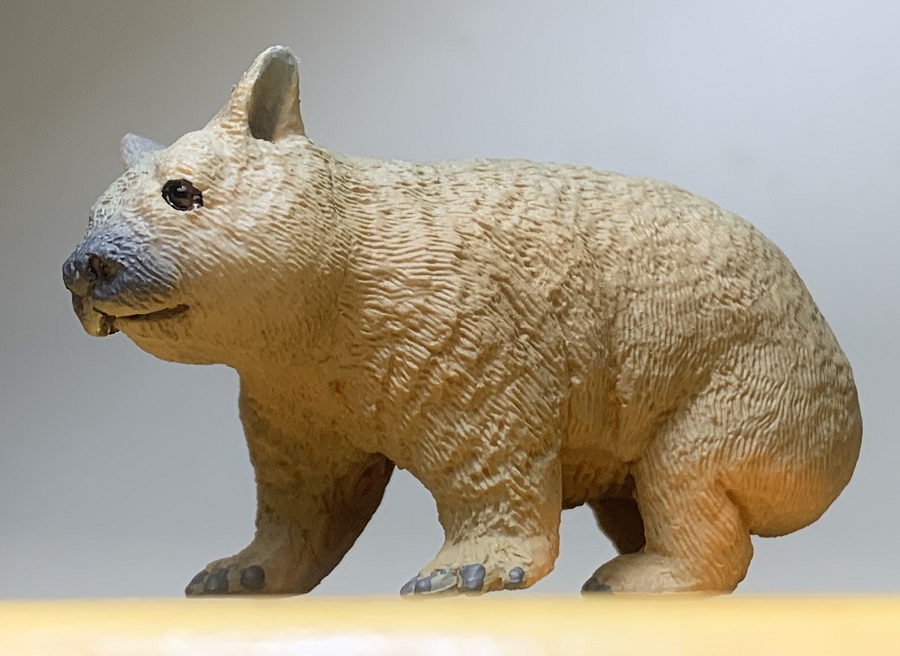
The figure is presented in a static pose with all four plantigrade feet planted on the ground and looking slightly leftward. The addition of a pouch indicates that it is a female. Wombat pouches face backwards, which helps keep dirt out while digging. The wombat’s closest relatives, koalas, also have this adaptation and in their case, it helps protect the pouch and joey within while climbing.

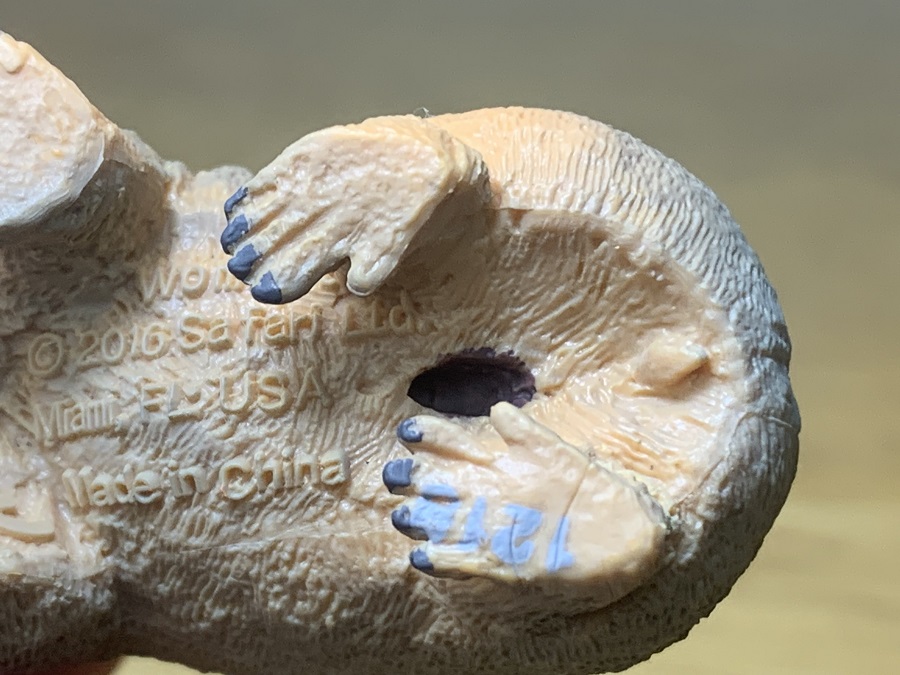
The hairy nose, along with proportionally larger and pointier ears, helps identify this figure as a southern hairy-nosed wombat vs. the common wombat. Five digits are sculpted on each limb with the innermost digit on the hindlimbs being reduced and clawless. A tiny tail, usually concealed by fur in life, can be seen behind the pouch. The rump is wide and robust and in life the wombat’s rearend is their primary defense. It is tough and reinforced with cartilage, which helps them block off their burrow entrance and protect them from predators.
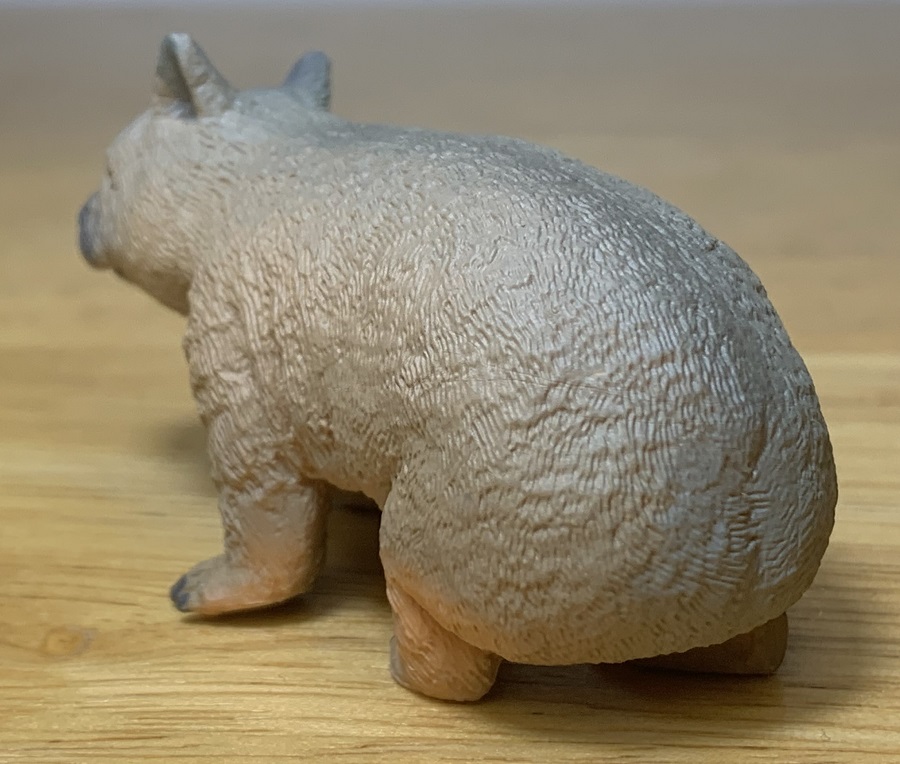
The fur detail is excellent, with a nicely layered appearance around the limbs and torso. The toy is painted in a mix of grays and browns with the back being mostly gray and the underside brown. The inside of the ears, claws, and muzzle are gray, and the mouth is outlined in black. I don’t normally like outlined mouths but it’s not an issue here. The eyes are black and shiny.

The Safari wombat is a figure that must be seen in person to be appreciated, as promotional pictures fail to do it justice. It’s meticulously sculpted with a lot of small details that help elevate it. It’s also a southern hairy-nosed wombat as opposed to the much more commonly made common wombat, and for that species it appears to be the best available. This figure was discontinued in 2023 but is still available online for the moment, get it while you can!
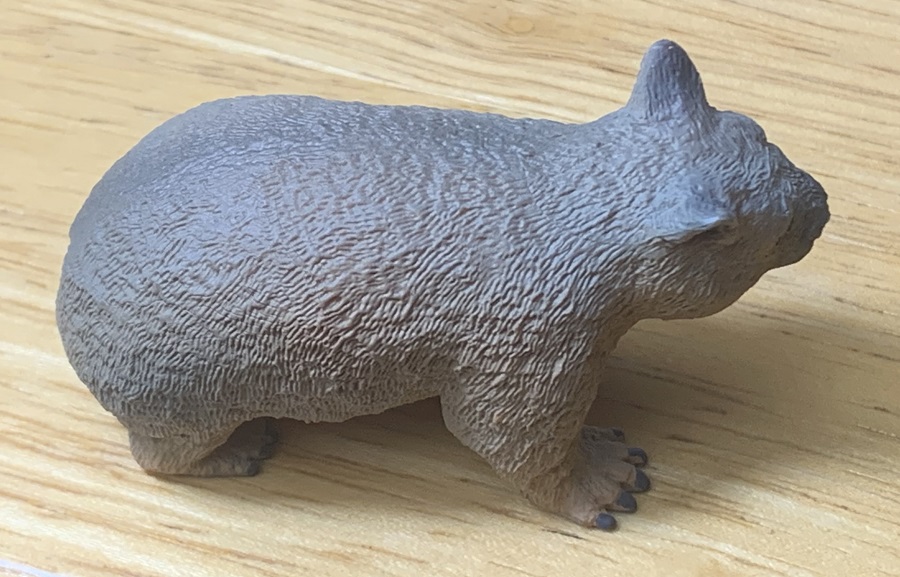
Disclaimer: links to Ebay and Amazon on the AnimalToyBlog are affiliate links, so we make a small commission if you use them. Thanks for supporting us!



